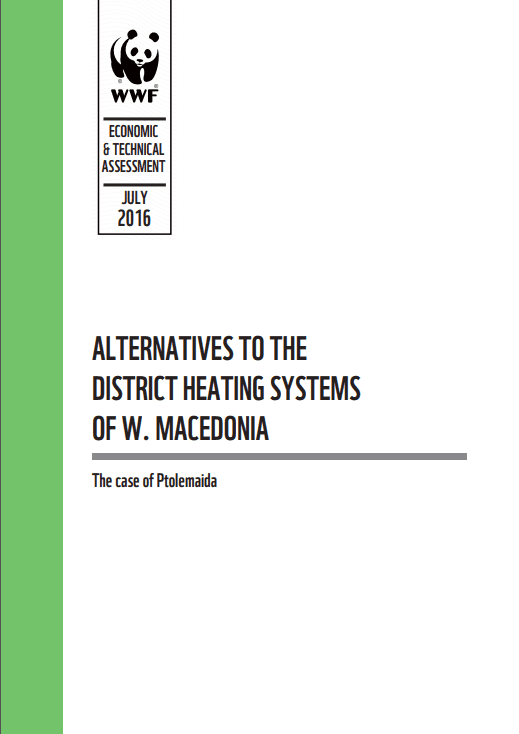Alternatives to the District Heating Systems of W. Macedonia

In Western Macedonia, Greece, there are three district heating networks currently in operation, which utilize the heat waste from lignite combustion in PPC’s steam-electric power stations, in order to meet the heating needs in Kozani, Ptolemaida and the greaterarea of Amynteo. However, the recent developments in the European environmental legislation and the international climate policy have a significant financial impact on the Greek electricity market as well, resulting in an ever decreasing share of lignite in the country’s electricity mix during recent years. At the same time, technological progress allows clean energy to directly compete against lignite; as a result, the future participation of lignite in the Greek electricity mix seems ominous. Thus, it becomes necessary to examine solutions that will meet the future heating needs in Western Macedonia, which are not based on the combined production of heat and power (cogeneration), using lignite as a fuel. This study investigates the economic viability of proposals in order to meet the district heating needs exclusively from Renewable Energy Sources (RES). The city of Ptolemaida was selected indicatively, although similar solutions can be examined in the case of other cities in Western Macedonia.Taking into account the local RES capacity, four different RES technologies were pre-selected for examination: a) Combined production of heat and power from biogas, b) Thermal solar systems with seasonal heat storage and heat pumps, c) Heat production from biom ass boilers and d) Combined production of heat and power (CHP) using the Organic Rankin Cycle (ORC) technology and biomass as fuel. Then, a comparative analysis of six different scenarios was carried out, which combine the above RES technologies. The scenario with the optimum financial performance is the one where the needs for district heating are exclusively met by CHP-ORC units (Scenario 4), since the assumption of zero profit for the investor (zero net present value after 20 years) corresponds to a decrease in the selling price of thermal energy compared to the present levels. If the objective is zero increase in the selling price of thermal energy, then the higher internal rate of return (IRR), for CHP-ORC units is achieved for a biomass supply cost of 90 €/tn, an objective deemed feasible. However, this solution includes the highest annual fuel needs. Since Scenarios 5 and 6, which also include other renewable energy sources in the district heating mix, show similar financial performances and an initial investment cost of a respective size, while at the same time requiring much smaller quantities of biomass, we consider those as more robustalternative solutions.The scenarios which are mainly based on the biomass boilers (Scenarios 1-3) show a higherIRR only for increases in the selling price of thermal energy that exceed 50% compared to the present levels. Thus, while the initial investment cost of Scenarios 1-3 is significantly lower, their financial performance is still clearly lower than those of Scenarios based on CHP -ORC units. All the proposed scenarios achieve much better heating energy supply prices than those of oil, reducing at the same time the environmental load, such as, for example, methane release from organic waste. The possibility to utilize the generated thermal energy throughout the whole year leads to even better financial performance from the operation of the proposed systems. It is worth noting that the application of the proposed solutions could contribute to the development of parallel financial activities, such as the installation of hydroponic greenhouse units for the development and exploitation of various agricultural products. The additional income to be generated by these activities can be utilized to subsidize the thermal energy selling price, while at the same time, new professional activities and jobs are expected to be developed, with significant social and environmental secondary financial benefits.The implementation of the above will contribute to the creation of a sustainable local development model which can partly offset the direct and indirect impact from the expected gradual closing down of PPC’s lignite power stations.It is therefore clear that the dilemma “lignite or oil” in order to meet the thermal needs of the district heating network no longer exists. This study demonstrates economically viable competitive alternatives based on RES, which must be taken into account in the future plans of district heating systems in Western Macedonia.